- Home
- Encyclopedia
- A Lynching In Rock Springs
A Lynching in Rock Springs
Not long after midnight on December 12, 1917, Wade Hampton, an African-American man charged with the attempted rape of three white women, was taken at gunpoint from his cell at the city jail in Rock Springs, Wyoming. Less than an hour later he was dead; shot to death when his captors’ attempt to hang him from a railroad bridge failed.
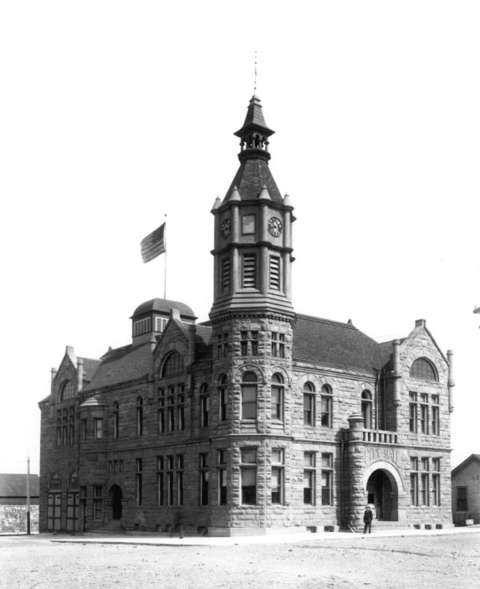
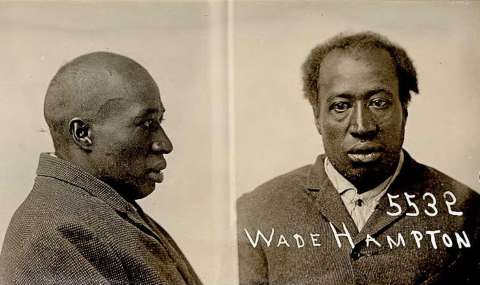
The crime came at a time when lynchings of Black men were on the rise in Wyoming. In Laramie, in June 1904, Joe Martin, accused of attacking a white woman, was hanged from a lamppost outside the Albany County Courthouse. In 1912, Frank Wigfall was lynched inside the state penitentiary in Rawlins, Wyo., accused of having attacked a white woman in town. In Torrington, Wyo., in 1913, Baseman Taylor died in police custody in a hotel room. And in 1918, the year after Hampton’s death, a Green River, Wyo., mob would hang Edward Woodson from a light pole at the train depot.
During these years, in fact, Wyoming had a rate of lynchings 30 times as high as in the states of the deep South, historian Todd Guenther has shown. And he goes on to claim that the lynchings in Wyoming weren’t meant only to terrorize the Black community. “So few African-Americans lived in Wyoming,” he continues, “and were such an insignificant part of the statewide economy, that the mobbers saw a possibility of banishing them entirely and creating and all-white society.”
In Wade Hampton’s case, it’s hard to say who the mobbers were or what, other than murder, their intentions were: They were never brought to justice. And as Hampton was never tried, he—or an advocate—never got to plead his case and the true facts of the case will never be known.
On December 14, the Rock Springs Miner reported:
“Shortly after twelve o’clock on Wednesday morning three men took Wade Hampton, a negro, from the city jail and after an unsuccessful attempt to hang him, he was shot to death. Hampton was in jail under $5,000 bonds for attempted rape, on three charges. The lynching was conducted in an exceedingly quiet manner and the public in general did not learn of the matter until about noon on Wednesday, when the body was found in the back yard of Pat Vickery, near the old baseball park...
“The remainder of the story is best told by other prisoners in the city jail at the time Hampton was taken to his death. According to this statement, shortly after twelve o’clock on Wednesday morning, three men broke open the outer door of the jail office. They secured the keys to the jail from a drawer in a desk, opened the doors into the jail and called to Hampton that the sheriff wanted him to take him to Green River. Hampton seemed glad of the interruption and went out into the office. The men promptly covered him with guns, placed hand-cuffs on him and chained his arms to his legs and then departed with him, leaving the jail open. Prisoners in the jail immediately notified Jailor [Fred] Traher who lives in the second story of the City Hall, but the men had disappeared. The red light was turned on and the marshals who were at supper at one of the restaurants, soon appeared at City Hall.
“About eleven o’clock on Wednesday forenoon Hampton’s body was found in the garden back of Pat Vickery’s home on Elk street. His hands were tied, there was a broken rope around his neck, a bullet wound in his back and a bullet had passed through his head.
“Just what happened after the men left the city jail with Hampton, is a matter of conjecture, but it is supposed that they attempted to hang the man from the railroad bridge on Elk street near the old baseball park, in the north part of town. It is supposed that when Hampton was dropped from the bridge, the rope broke and he fell to the stream, a distance of sixteen or eighteen feet. It is supposed that he then tried to make his get-away by running up the stream towards the east and his body was found about five hundred feet from where the attempted hanging is supposed to have occurred. It is considered that the route traveled by Hampton was dark and that the men were unable to see him in his flight; they immediately started in pursuit and cornered him in Vickery’s garden and finished their work by shooting.”
The inquest held by Joseph Joyson, the Sweetwater County Coroner, barely qualified as a gesture and the undisguised racial bigotry of the day was fully evident. Only two witnesses testified: Deputy Town Marshal John A. Stoddard and Rock Springs Town Marshal W.C. Lewis, neither of whom was present at the City Jail when Hampton was taken. None of the first-hand witnesses, the jailer, Fred Traher, or Hampton’s fellow prisoners, were called.
Stoddard’s testimony was brief and the bulk of it dealt not with Hampton’s death, but the charges against him:
“Q. State your name.
“A. John A. Stoddard.
“Q. Occupation?
“A. Deputy Marshal.
“Q. State what you know about this affair.
“A. I was sitting in the office when the phone rang [on December 11] which I discovered afterwards came from the freight depot, and this fellow said, “where are all your Cops?” I asked him what was up. He said to go to Blairtown right away, down at the store. [Blairtown was a Rock Springs neighborhood south of City Hall and very near the Union Pacific main line.] I went and got Lewis [Town Marshal W.C. Lewis] and got his car and started down there. From there on I couldn’t tell you any different than what Mr. Lewis stated, about getting the n----r, arresting him, bringing him back and locking him up.
“Q. You may state in your own language what occurred.
“A. When we got down there went to the house on the left of the road on the way to the Blairtown Mine, on this side of Pivac’s where they told us there was a n----r down there with a gun. Mr. Bonatto said one crazy n----r and he was sore because we didn’t get there sooner. We started after him as Mr. Lewis stated, we got the n----r just opposite the packing house. He was going down the track and we left the automobile off the road and went over there, Mr. Lewis got ahead of him and I started straight for him. We were pretty close before he saw us and put his hands in his pockets and Mr. Lewis told him to take his hands from his pockets and to put them in the air. We brought him back to Town in the car.
“Q. Did he make any statement to you at the time?
“A. Never said a word down there.
“Q. What time was this?
“A. In the neighborhood of 2 o’clock.
“Q. Do you know anything regarding the breaking in of the jail on the morning of the 12th?
“A. Not until after it was over with. I had just finished eating my supper and was going home when the light came on at City Hall. I told the night man that I supposed he didn’t need me that I was going home and they went up and found the door was broken open. Matt came down after me and I went up there and saw the catch was barred off. I thought the best thing to do was to call the deputy sheriff. So when he came over we started to search for him. Went to all the bridges up and as far as No 5[1] and couldn’t find any trace so we gave it up. Mr. Miller left us on the west side of the wagon bridge. It was 3:30 then so I went home and I knew nothing about it until I came up Town the next day. They found him in Pat Vickery’s lot.
“Q. You didn’t find any gun on this man?
“A. Nothing but a knife.”
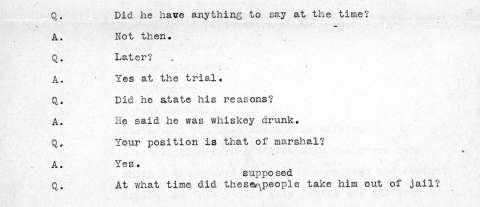
In his testimony, Town Marshal Lewis identified the victims of Hampton’s assaults as “Mrs. Mary Makkie,” “Mrs. Joe Pivack,” and “Mrs. Matt Andretich” all of Blairtown. The Salt Lake Tribune described the attacks:
“Hamilton[2] was accused of attacking three women at Blairtown all within the space of a few minutes. He threatened the first woman with a knife, as he grabbed her by the throat, but she managed to free herself partly and screamed for help.
“The negro then released her and ran to another home near by, where he attacked a woman, whom he found in a coal house. This woman also screamed, and neighbors, who started to her rescue, scared the negro away.
“In the third case the woman was thrown to the floor, but her children began to scream loudly and attacked the negro, who again made his escape.”
At the inquest, according to court records, Lewis went on to recount Hampton’s arrest and later removal from his jail cell:
“Q. State what they told you when you sent down to investigate.
“A. It was about two o’clock when Mr. Stoddard came down to the house, (I was eating dinner at the time,) and told me there was a call from Blairtown, that there was a bad n----r down there.
“Q. What was the name of this n----r?
“A. Wade Hamilton [sic]. I took the automobile and we went to Blairtown, and there was a party down there, Benatto, he is a storekeeper, he told us about this n----r and he said he had started down the railroad track; so we started down in the machine after him, and we got him probably a mile below Blairtown on the railroad.
“Q. In what direction was he going?
“A. West. We left the machine at the side of the road and started over to him, Mr. Stoddard was on the east side of him and I on the west side. As soon as he noticed the two of us he put his hand in his pocket. I told him to pull his hands out of his pockets and to put them up, which he did. We arrested him and brought him up to the City jail.”
“Q. Did he have anything to say at the time?”
“A. Not then.
“Q. Later?
“A. Yes at the trial.
“Q. Did he state his reasons?
”A. He said he was whiskey drunk.
”Q. Your position is that of marshal?
“A. Yes.
“Q. At what time did these supposed[3] people take him out of the jail?
“A. About 12:20, as I understand from the jailer. He was awakened at one time he told me, that he heard a man on the steps two different times upstairs. He got up but they got away, and he went back and never heard anything more until a prisoner in jail went up there and told him they took this other fellow out of jail.
“Q. “What time was this?
”A. 12:20.
”Q. He didn’t see any parties, however?
”A. Not that I know of.
“Q. At about what place did they find his body?
“A. In Pat Vickery’s lot, down on the creek.
“Q. Did Mr. Vickery hear any noise or disturbance?
“A. No, sir.
”Q. Did any one else make any report to you?
”A. Only Mrs. Miller, she stated she heard two shots.
“Q. About what time was this?
“A. About one o’clock.
“Q. How far does Mrs. Miller live from the place?
“A. About seven or eight hundred feet, I should judge.”
Though Lewis referred to Hampton’s “trial,” such was not the case. On December 11th, he appeared before Justice of the Peace E.E. Johnson for a preliminary hearing, and the Rock Springs Miner described the proceedings:
“At the hearing he was positively identified as the brute that had made the attempts. In addition to this identification, he had been kept in sight at all times from his departure from Blairtown until taken in charge by the officers. There can be no doubt as to his identity. After the hearing he was placed in the city jail awaiting removal to the county jail at Green River.”
Hampton was bound over to District Court in Green River. In a handwritten passage, his charging documents note:
“Dec. 11th 1917. 7:00 o’clock PM.
Wade Hampton defendant in court and duly arraigned, and three complaints made and read to him and being ready for a hearing Entered a plea as follows: in one way he was guilty as charged, but that he was drunk.”
The Justice’s Court Complaint for the State of Wyoming vs. Wade Hampton, File Number 850S, takes note that “Three complaints but Wade Hampton died Dec. 12th 1917 about 1:00 A.M.”
The sequence of events in the last half day of Wade Hampton’s life, then, are these: arrested around 2:00 p.m. on December 11, 1917, arraigned at 7:00 p.m., at which time he entered a qualified guilty plea, and shot dead six hours later when the effort to hang him from a railroad bridge failed.
The coroner’s inquest findings were predictable:
“Rock Springs, Wyo., December 13th 1917
“We the jury duly empaneled and sworn by Joseph Joynson Coroner for Sweetwater State of Wyoming after due investigation and consideration and to the death of one Wade Hamilton [sic]met hiswe therefore find that said Wade Hamilton [sic] met his death by gun shot wound in head in hands of party or parties unknown.”
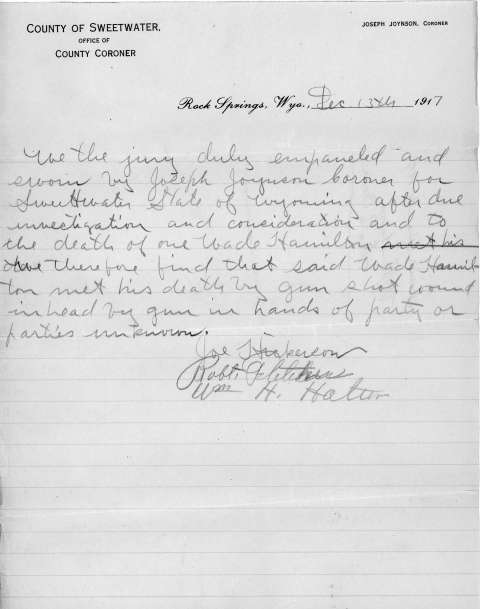
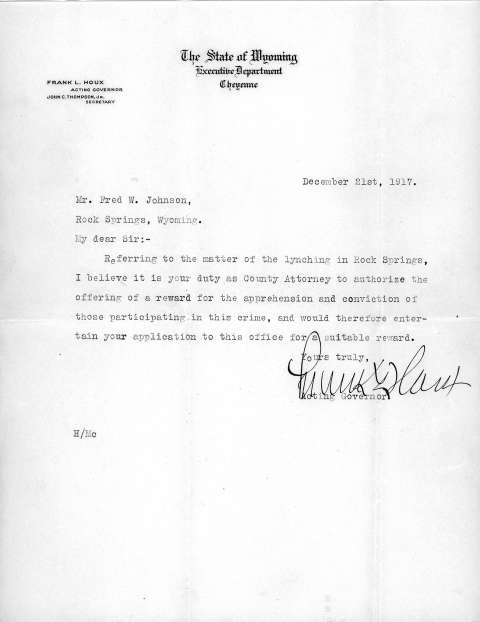
Little is known about Wade Hampton. He was born in Nashville, Tennessee, in 1867, and lived for a time in Kansas City, Mo. He appeared in Beaverhead County, Mont., in 1916, where he was arrested for first degree burglary after breaking into a home in Dillon and sentenced on June 30, 1916, to a term of 12 to 18 months at the state prison in Deer Lodge. He was released from prison in November 1917, and is thought to have returned to Kansas City. According to a contemporary newspaper account, he was “one of the men shipped from Kansas City to the double tracking between Rock Springs and Rawlins. Just how long he had been in the vicinity of Rock Springs and Blairtown is not known.”
As time passed with little or no action evident on the part of local authorities to identify and prosecute Hampton’s killers, the Black community in Rock Springs appealed to Acting Governor John Houx for a state investigation. On December 21 Houx wrote to Sweetwater County Attorney Fred W. Johnson:
“I believe it is your duty as County Attorney to authorize the offering of a reward for the apprehension and conviction of those participating in this crime, and would therefore entertain your application to this office for a suitable reward.”
Ultimately a notice was published offering a $500 reward, but nothing came of it. The trio that killed Hampton was never identified, and he was “buried at the expense of the county.”
Wade Hampton was not the last Black man lynched in Sweetwater County. In Green River on December 10, 1918—one year later nearly to the day—a railroad porter named Edward Woodson, who had fatally shot one white man and wounded another after an altercation at the train depot’s meal counter, was captured by two Union Pacific special agents and delivered to Sheriff Arthur Dixon and Deputy Sheriff Frank Kidd at the County Jail. Shortly after, a mob removed Woodson from the building and lynched him.
Sheriff Dixon testified later that he estimated the size of the mob at “four or five hundred,” but he didn’t recognize anyone. Neither did Kidd. No one was ever charged in Woodson’s death.
That Wade Hampton, drunk or sober, attempted violent assaults on three women in Rock Springs and Edward Woodson gunned down his victim in Green River are not matters of dispute. Both men committed brutal crimes that resulted in their swift capture and incarceration, and rightly so, but there it ends. The unspeakable practice of lynching—almost exclusively an American phenomenon—has always claimed many times more Black lives than White. “During the years of 1904 to 1920,” historian Guenther notes, “when the majority of Wyoming’s black lynchings occurred, none, not a single one of the hundreds of Wyoming Caucasions accused of similar crimes was lynched.”
The murderers that made up lynch mobs in those years were seldom, if ever, brought to trial. But outrage and a yearning for justice still existed. On December 14, two days after Hampton’s death, a powerful editorial, excerpted here, appeared in the Cheyenne State Leader:
A BLOT ON THE STATE
“Race prejudice should have no place in a democracy. It ill becomes us to preach about the quality of man when he cannot accord our negro citizens the same rights of justice and legal punishment that we give to our white members who offend against the laws of the state...
The Rock Springs affair can only be deplored to the deepest by every citizen of Wyoming who has at heart the maintenance of the state’s reputation for fairness and democracy and enlightened Christianity.”
Resources
Sources
- “A Blot on the State,” Cheyenne State Leader, December 14, 1917
- “Colored Man is Lynched for Attempts to Assault Women.” Rock Springs Rocket, Decembe14, 1917
- “Escapes Mob Noose; Is Slain in Flight,” Salt Lake Tribune, December 13, 1917
- Guenther, Todd. “‘The List of Good Negroes:’ African American Lynching in the Equality State.” Annals of Wyoming: The Wyoming History Journal, 81:2, Spring, 2009.
- “In the matter of the death of Edward Woodson (Colored).” Sweetwater County Coroner’s Report, Dec. 27, 1918. Sweetwater County Historical Museum, Green River, Wyo.
- “In the Matter of the Death of Wade Hamilton (Colored) - who was found dead after being removed from City Jail by mob, at Rock Springs, Wyoming, Sweetwater County, on December 12th, A.D. 1917.” Sweetwater County Coroner’s Report, December 13th, 1917. Sweetwater County Historical Museum, Green River, Wyo.
- “Murder and Lynching at Green River Tuesday.” Rock Springs Miner, December 13, 1918
- “Switchman Shot - Another Wounded - Negro Lynched.” Green River Star, December 13, 1918
- “Negro Taken from City Jail and Lynched on Tuesday Night.” Rock Springs Miner, December 14, 1917
Illustrations
- The prison photo of Wade Hampton is from the Montana Memory Project. Used with thanks.
- The rest of the images are from the collections of the Sweetwater County Historical Museum. Used with permission and thanks.
[1] Union Pacific Coal Mine Number 5, about ½ mile northwest of City Hall and the City Jail
[2] Wade Hampton was mistakenly referred to as “Wade Hamilton” here and elsewhere
[3] The word “supposed” was inserted later into the inquest transcript
